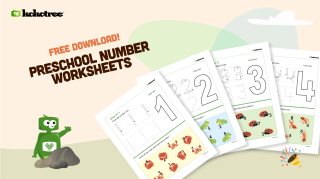Do you have a curious little learner at home bursting with energy? As parents, we understand that getting our preschoolers acquainted with direction-giving activities is essential for their development. In this blog post, we’ll share fun and engaging activities to help your child develop a strong sense of direction and spatial awareness. Not only will we teach our little ones how to give and follow directions, but we’ll also create memorable learning experiences that will last a lifetime. So grab a seat and join us, because we have plenty of insights and ideas coming your way!
Preschoolers’ Direction-Giving Activities
Preschoolers’ direction-giving activities are interactive, educational games that focus on building a child’s sense of direction and spatial awareness. These activities often involve verbal and non-verbal instructions, taking turns as leaders and followers, and engaging children’s creativity. By participating in these games, preschoolers learn to understand and communicate directions more effectively, which is a valuable skill for their overall development.

Introduction to Direction-Giving Activities
Direction-giving activities play a crucial role in early childhood education as they boost a preschooler’s sense of direction, spatial awareness, and improve cognitive skills. These exercises encourage active learning, enhance communication abilities, and foster teamwork among children. Let’s dive into some interactive and engaging direction-giving activities guaranteed to make learning enjoyable for your toddler.
Activity 1: Follow the Leader
Follow the Leader is a classic game that helps children absorb fundamental concepts of direction and spatial awareness.
Supplies and Preparation:
- No specific supplies needed.
- Select an open, hazard-free space either indoors or outdoors.
How to Play:
- The adult or an older child begins as the leader, while the preschoolers line up behind them.
- The leader starts walking, making various movements (e.g., hopping, skipping) and giving verbal directions (e.g., “turn left,” “jump twice”).
- The children must mimic the actions and follow the directions given by the leader.
- After a few minutes, pick another child to be the leader, ensuring that all children get a chance.
Activity 2: Treasure Hunt
A Treasure Hunt challenges children to follow clues while using their problem-solving skills and sense of direction.
Supplies and Preparation:
- Small treasures (stickers, toys, or snacks).
- Clues written or drawn on index cards.
- Choose a suitable location (indoors or outdoors) and distribute the treasures in hidden spots.
How to Play:
- Divide the children into groups, with each group starting in a different area.
- Hand each group the first clue card and let the treasure hunt begin!
- The children follow the clues, giving and receiving directions within their group.
- When a group finds the treasure, they can trade in their cards for a reward, making the game exciting and enjoyable.
Activity 3: Simon Says
Simon Says combines fun with directional learning, honing a preschooler’s listening skills and ability to follow directions.
Supplies and Preparation:
- No specific supplies needed.
- Choose an open space for playing the game.
How to Play:
- The adult or an older child acts as “Simon.”
- Simon gives directions to the children by saying, “Simon says,” followed by an action or movement (e.g., “Simon says touch your toes,” “Simon says spin around”).
- The game continues until Simon gives a direction without saying “Simon says.” The children who can identify the incorrect instruction, without responding to it, stay in the game.
Activity 4: Traffic Light Game
This creative game teaches preschoolers about traffic rules while improving their directional and spatial awareness. Moreover, it acquaints them with color recognition and enables them to follow directions efficiently.
Supplies and Preparation:
- Green, yellow, and red cards or flags.
- Select a spacious area for the game, preferably outdoors.
How to Play:
- The adult or an older child acts as the traffic controller, holding the cards or flags.
- The other children are the “cars” and must line up at a designated starting point.
- The traffic controller holds up the green card and shouts “Green light!” The children start moving (running or walking) in response.
- When the traffic controller holds up the red card and yells “Red light!” the children should stop immediately.
- Introduce the yellow card while calling out “Slow down!” to teach the concept of slowing down before stopping.
Mazes challenge and engage children in problem-solving activities while finetuning their direction-giving skills.
Supplies and Preparation:
- Chalk or tape to create a maze on the floor (indoor or outdoor).
- Set up the maze, making sure it has a clear start and finish point.
How to Play:
- One child is blindfolded, and another acts as their guide.
- The guide gives verbal directions to navigate the blindfolded child through the maze.
- After reaching the finish line, the team can swap roles, allowing everyone a chance to both guide and navigate the maze.
Online Direction-Giving Gaming Options
In addition to hands-on activities, a learning app for toddlers can further enhance your child’s direction-giving skills. These apps provide a variety of entertaining and engaging options to build spatial awareness, develop coordination, and promote critical thinking skills. Search for an app that suits your child’s needs and explore new learning dimensions within the digital domain.
With these activities in your repertoire, you’re well-equipped to make early childhood education both captivating and effective for your toddler. By investing time and effort in these games, you’ll help your child build essential life skills while creating memories to cherish for a lifetime.
Boosting Toddler Education: Cognitive Benefits of Direction-Giving Activities
Participating in direction-giving activities not only increases your preschooler’s sense of direction and spatial awareness but also contributes to a well-rounded toddler education. Let’s explore some of the cognitive benefits associated with these activities:
Enhanced Communication Skills
By working together in direction-giving activities, preschoolers learn to express their thoughts, give clear instructions, and effectively convey what they want others to do. This helps develop their communication skills, essential for future social interactions and success in school.
Improved Listening and Comprehension
Direction-giving activities require toddlers to listen carefully and comprehend instructions given by others. These vital listening and comprehension skills boost their intellectual development and ensure that they excel in their educational journey.
Teamwork and Cooperation
Many direction-giving activities involve working in pairs or groups, encouraging preschoolers to collaborate and share ideas. This fosters a sense of cooperation, helping them learn about teamwork and its value in achieving common goals.
Increased Problem-Solving Abilities
Activities such as navigating a maze or participating in a treasure hunt develop problem-solving abilities in toddlers. These challenges require them to think critically, plan, adapt, and come up with creative solutions to reach their goal.
Incorporating Direction-Giving Activities into Your Child’s Daily Routine
To ensure that your child gets the most out of these engaging activities, it’s essential to make them part of their daily routine. Here are some tips to keep your preschooler consistently involved:
Keep Things Interesting
Variety is crucial when it comes to engaging your preschooler. Rotate activities regularly to prevent boredom and maintain their interest. You can even create variations of the same activity or involve the whole family for added fun.
Set Realistic Expectations
Each child learns at their own pace. Be sure to set achievable goals for your preschooler, recognizing their improvements and celebrating accomplishments along the way. This will help foster a positive learning experience.
Encourage Child-Led Activities
Allow your preschooler to take the lead in certain activities. This will not only boost their confidence but also improve their ability to give directions while fostering independence and self-expression.
Reflect on the Learning Experience
After each activity, take some time to discuss what your child learned, what they liked, and any challenges they faced. This conversation encourages self-reflection and helps them consolidate their experiences and learning process.
By incorporating these direction-giving activities into your child’s daily routine, you’ll be providing a strong foundation for their cognitive growth and inspiring a love for learning. Remember, your involvement and encouragement can make all the difference in molding a successful path in toddler education!
FAQ Section: Preschoolers’ Direction-Giving Activities
Here, we address some frequently asked questions that parents and educators may have regarding direction-giving activities for preschoolers. Explore these questions and answers to enrich your understanding and to help guide your little one through fun and educational experiences.
1. Can direction-giving activities be adapted for children with special needs?
Yes, these activities can be tailored to meet the learning requirements of children with special needs. Adjust the level of complexity, instructions, and materials to make the activities more accessible and enjoyable for your child.
2. How often should I engage my child in these activities?
Ideally, you should involve your preschooler in direction-giving activities as part of their daily routine, ensuring a balanced mix of different learning experiences, including physical, cognitive, artistic, and social-emotional development.
3. Can I create my own direction-giving activities?
Absolutely! Feel free to create your own activities tailored to your child’s interests and abilities. Incorporate themes and elements that excite and engage them while still encompassing direction-giving concepts.
4. How do I ensure my child is safe during these activities?
To ensure your child’s safety, always supervise them during the activities, choose hazard-free environments, use age-appropriate materials, and opt for non-toxic supplies wherever required.
5. Can I play these games with multiple children of different ages?
Yes, most direction-giving activities can be played with children of different ages, serving as a great opportunity for siblings and peers to interact and learn from one another.
6. Should I switch roles with my child during the activities?
Definitely! Allowing your child to play both leading and following roles helps boost their confidence, direction-giving skills, and overall development.
7. How do I motivate my child to participate in these activities?
Encourage them by making the activities fun, age-appropriate, and appealing to their interests. Praise their efforts and accomplishments to boost their motivation and confidence.
8. Why are direction-giving activities crucial for early childhood education?
These activities lay a strong foundation for building essential skills like communication, listening, problem-solving, and spatial awareness, all of which contribute to a well-rounded education in their formative years.
9. Can I begin direction-giving activities before preschool age?
Yes, you can start incorporating simple direction-giving activities as early as possible, adjusting the level of complexity according to your child’s age and abilities.
10. How can I gauge my child’s progress in these activities?
By observing their participation, enthusiasm, and improvement over time, you’ll be able to gauge their progress. Remember to communicate with them and discuss their experiences during and after the activities.
11. Are there any online resources or apps available for direction-giving activities?
Yes, there are many online resources and learning apps for toddlers that offer engaging and interactive direction-giving activities, as well as other educational content suitable for your child’s age group.
12. How do I encourage independence through direction-giving activities?
By giving your child opportunities to take the lead, make decisions, and give instructions during activities, you foster a sense of independence and encourage self-expression.
13. Can I combine direction-giving activities with other learning goals?
Of course! You can combine direction-giving activities with other learning objectives, such as language development, math skills, or creative expression, by incorporating relevant themes and materials into the activities.










